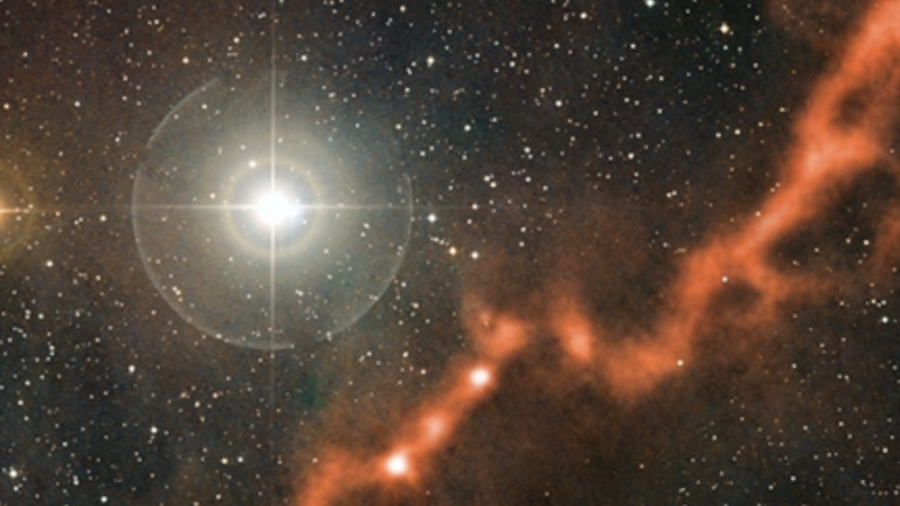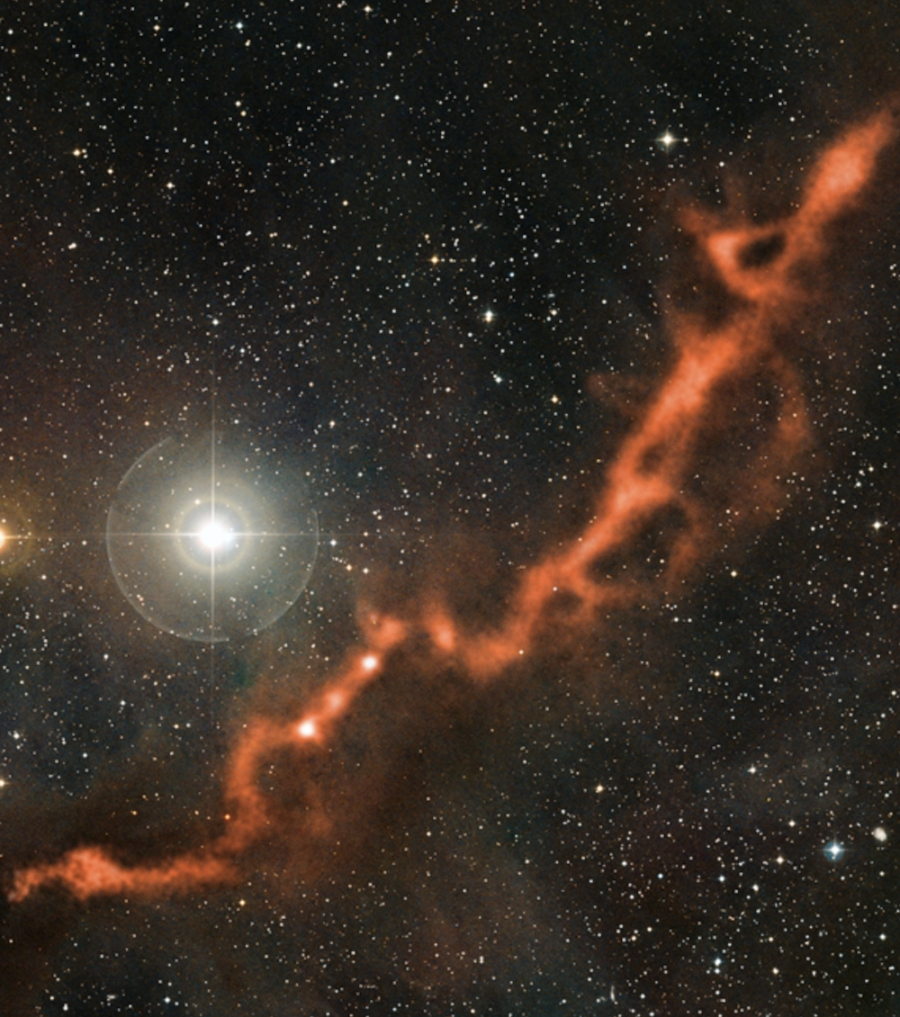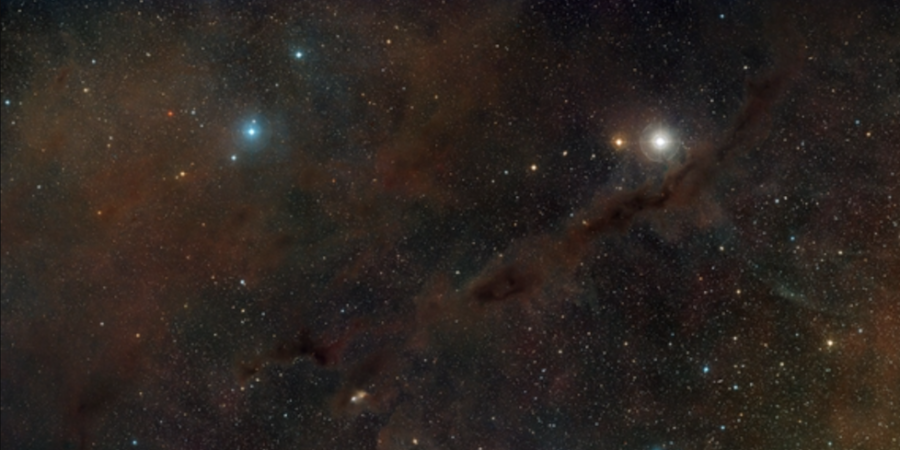Stunning Images Of Cosmic Star Factories Revealed By APEX Telescope

The picture above is of the Taurus Molecular Cloud, located in (you guessed it) the constellation of Taurus, around 450 light-years away from our little blue marble.
The image was taken by the APEX telescope in Chili, capturing a ribbon of gas and dust almost ten light-years long. This is a truly beautiful sight from the APEX telescope, a glimpse out into the solar system of regions we’ve only really imagined in the past.
To the naked eye, these clouds of dust appear as dark patches in the sky, blocking out astronomers’ view of the stars beyond. The dust grains making up the cloud are incredibly cold, around -260 degrees Celsius, so it takes very sensitive equipment to capture an image of them.
Here, in the APEX telescope images, the faint glow from the dust’s heat is shaded orange, making for a pretty snazzy wallpaper. In recent years we’ve gotten more and more looks into our cosmos, seeing wonders that remain stunning well after the first glimpse. A mystery? Sure. Exciting? No doubt about it.
The two parts of the pictured cloud from the APEX telescope are Barnard 211 and Barnard 213. They take their name from astronomer Edward Emerson Barnard, who compiled a photographic atlas of these “dark markings of the sky” in the early 20th century and correctly speculated that their appearance was due to “obscuring matter in space. “
Aside from being another piece of beautiful cosmic scenery from the APEX telescope, the Taurus Molecular Cloud is one of the regions closest to Earth where star formation occurs. There are newborn stars hidden behind that curtain of dust, and more in the process of forming.
The Taurus Molecular Cloud is also home to a number of young stars, some of which are surrounded by protoplanetary disks where future solar systems may be taking shape.
This region is not only known for its role in star formation but also provides some rather interesting insights into the conditions necessary for the formation of planets and the early stages of solar system development.
Understanding these regions is incredibly important if we want to understand the galaxy as a whole (if that’s even possible). This is why the APEX telescope is so important.
As the European Southern Observatory’s story explains:
When the clouds collapse under their own gravity, they fragment into clumps. Within these clumps, dense cores may form, in which the hydrogen gas becomes dense and hot enough to start fusion reactions: a new star is born. The birth of the star is therefore surrounded by a cocoon of dense dust, blocking observations at visible wavelengths. This is why observations at longer wavelengths, such as the millimetre range, are essential for understanding the early stages of star formation.
In the APEX telescope images, The bright star to the left of the cloud is φ Tauri, which is actually closer to us than the cloud itself.
Below, you can see a larger version of the header image and another shot from the APEX telescope. Again, these are rare and gorgeous looks out into galaxies far, far away.














